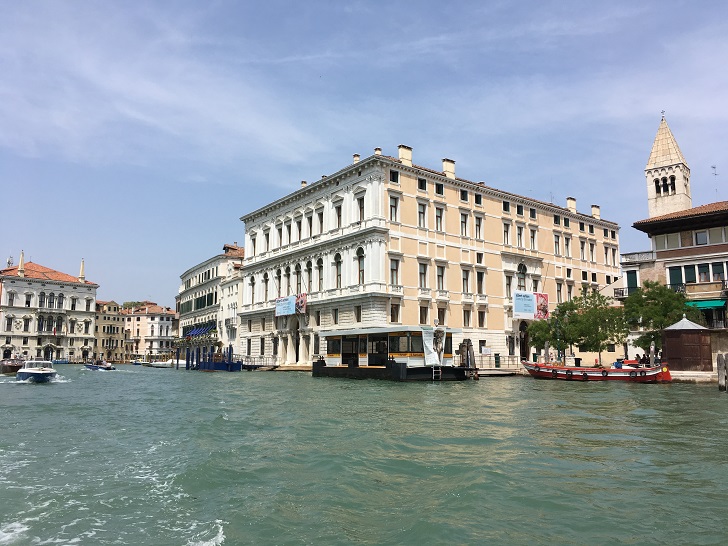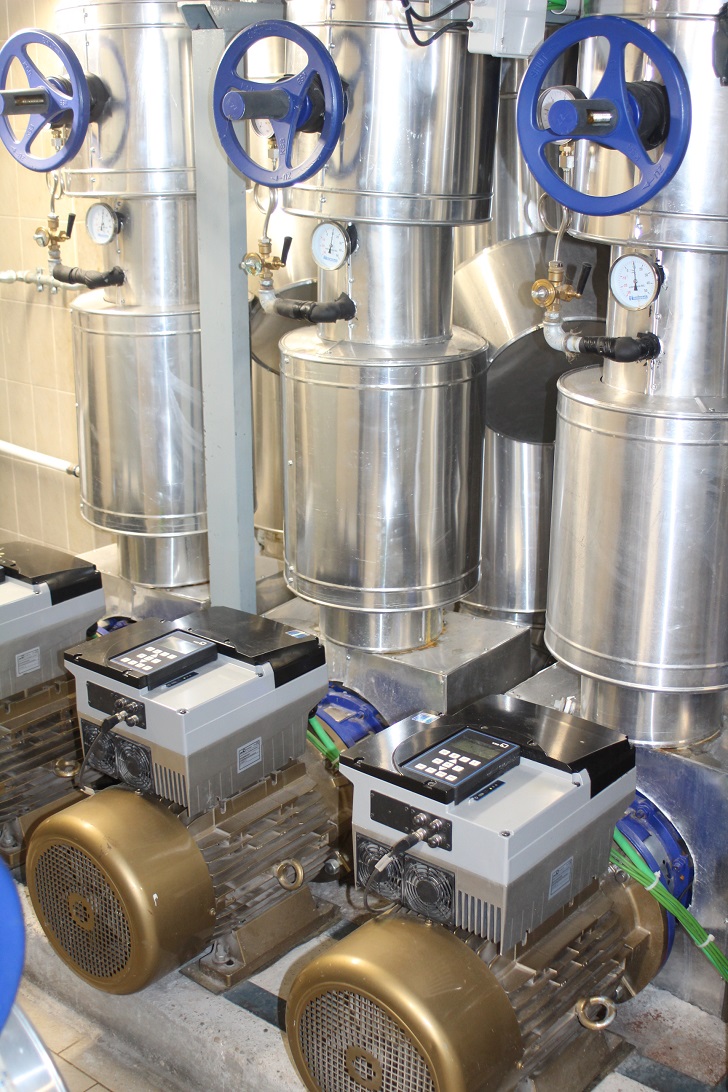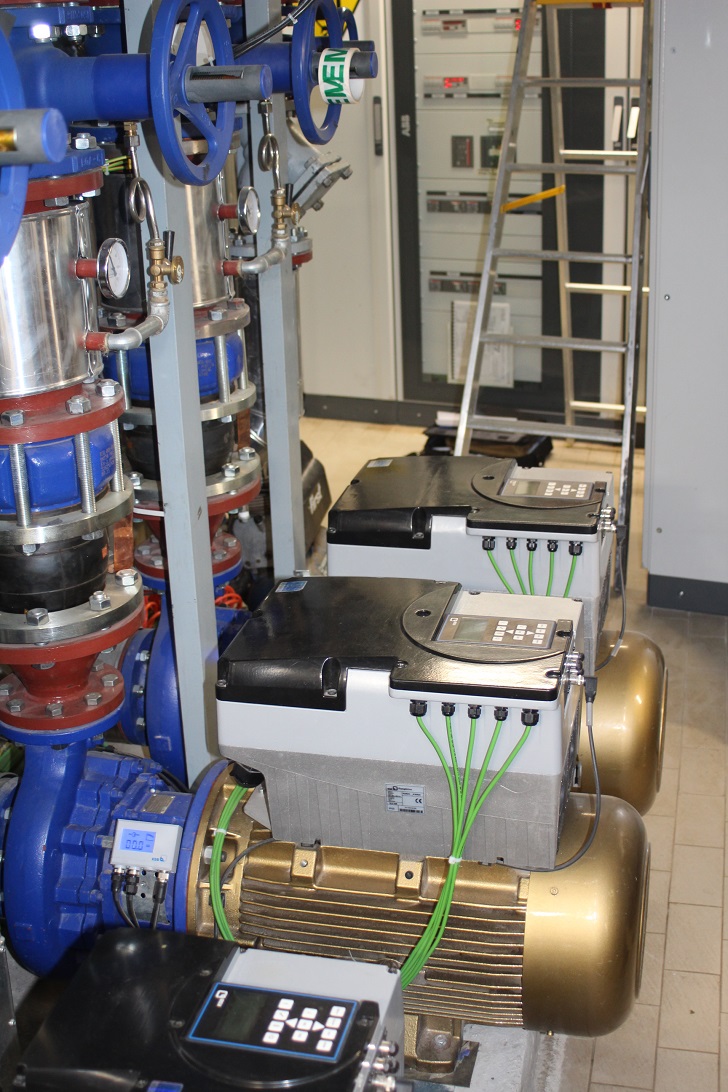


The Palazzo Grassi in Venice sits on the Grand Canal and is the city’s leading contemporary art museum. In 2016, after analysis of the building’s past energy consumption, an international pump manufacturer was called on to update the heating and cooling infrastructure.
Art galleries and museums know that one of their top priorities is to create and maintain the perfect environmental conditions to ensure the fabric of their artwork is not compromised. Yet for many buildings of historical and architectural significance in Venice, respecting such a status, whilst managing the humidity, air quality and temperature, is both expensive and a major logistical challenge. Any modernisation of their building services’ infrastructure must also consider the past.
The Palazzo Grassi is one of the most famous Venetian buildings. Designed by Giorgio Massari and constructed between 1748 and 1772, it is characterised by two great façades, one facing the Grand Canal and the other facing Campo San Samuele. Following a major renovation in 2006 by the Japanese architect Tadao Ando, it has become the top contemporary art museum in Venice. Owned by François Pinault, the museum is now host to his collection of contemporary art which is reputed to be one of the five largest in the world.
Culture and sustainability In 2016, following a careful analysis of its past energy consumption, one of the building’s most important and extensive renovation projects was implemented. This involved the renewal of parts’ environmental services infrastructure in order to optimise energy consumption, whilst at the same time delivering the sensitive conditions required for housing valuable works of art. The essential components needed to achieve energy savings were the replacement hot and cold water pumps, valves, strainers and compensators, all of which were sourced from KSB Italia by the project contractors Siram SpA.
The main part of the project was to update the hot and cold water systems for the two heating and cooling circuits in the building. “The effectiveness of the heating and cooling infrastructure that maintains the heating and air-conditioning throughout the Palazzo Grassi is largely dependent on the water pumps,” says Matteo Zanus, Siram project manager. “Energy efficiency is very important in Italy and no more so in large, historical buildings such as the Palazzo Grassi. Having provided pump maintenance to the Palazzo Grassi over a number of years, Siram was contracted to undertake a refurbishment of the pumps’ facilities, a task involving the installation of three cold water pumps and two hot water pumps.”
The water used in the system is refreshed by pumping water from the lagoon using two KSB KRT submersible pumps. The salinity and pollution of the water, as well as temperatures changes are elements that must be dealt with before it can be used in the closed-loop systems. Filters remove the pollution, a small desalination plant removes the saline content and two heat exchangers adjust the water temperature to the building’s operating requirements.
Modern centrifugal pumps have already achieved a level of efficiency that is hard to improve on. When they appear to be consuming more energy than necessary, it is very probably due to lack of attention. Any pump can only operate as efficiently as its system, which includes valves, piping, filters or heat exchangers, allows it to. At the Palazzo Grassi, the performance of these products working as one ultimately affects the controlled environment within the building.
Design challenges Designing and installing a completely new pumping infrastructure for air-conditioning and ventilation in a historic building does present a challenge, not least because the buildings were never designed for such equipment. In the case of the Palazzo Grassi, the pump room on the lower ground floor is best described as ‘compact’. Therefore, the first consideration had to be to find five suitably sized pumps, two for hot water circuits and three for the cold water circuits that could deliver the water flows and pressures for the system. Then there was the matter of connecting new piping to the existing infrastructure.
Finally, there was meeting the customer’s requirement for energy efficiency. Fortunately, these three requirements could be satisfied by using KSB’s Etabloc Series pumps, which, in their most recent incarnation, are equipped with the advanced control/monitoring unit PumpMeter. Three of the pumps are driven by the energy efficient KSB SuPremE motor, which, since December 2016 meets class IE5 requirements, and two are driven by KSB SuPremE IE4 class motors. All five pumps are fitted with the PumpDrive, a modular, self-cooling frequency inverter.
Etabloc pumps KSB’s Etabloc forms part of the highly rated Eta range of pumps, which have proved successful in many applications around the world over several decades. Manufactured by KSB to specific customer requirements, the Etabloc comes into its own in situations where space is at a premium because the pump, PumpMeter and motor are connected in one compact unit making it an extremely space-saving design. “The attraction of the Etabloc/PumpMeter/ PumpDrive/SupremE motor combination is that there is no requirement for control panels. This means that we can deliver the complete package to site and simply connect it to the power and water infrastructure,” comments Matteo Zanus.
However, making use of energy-efficient motors only makes sense if all other savings potential have been exploited. No energy-efficient motor can achieve reasonable levels of energy consumption with a pump that is operating far off its best efficiency point, which is where the PumpDrive PumpMeter come in to play. Pre-programmed by KSB to meet the customer’s specific operational requirements, PumpMeter continuously analyses the pump operating data, and establishes a load profile. This makes the operator aware of energy saving potential that could be leveraged by using a variable speed system, in this case the PumpDrive.
Real-time monitoring Employing this KSB technology, the building services management team at the Palazzo Grassi can remotely monitor the pumps in real-time as each PumpMeter is accessed through the building services management software. PumpMeter enables users to operate the pumps so that they are always running at their best efficiency point, which also greatly extends their service life. At the same time, this directly translates into lower energy costs.
For the Palazzo Grassi installation, which employs variable speed pumps, the five PumpMeters are powered by PumpDrive 2 featuring a digital signal via Modbus RTU interface. PumpDrive 2 has the I/O board and is accessed through the building services management software. In the case of variable speed pumps, PumpMeter only measures differential pressure that is compared with the setpoint/control value. In order to keep differential pressure constant, PumpDrive 2 makes the motor (together with the pump) run at variable speed (increases or reduces it), to fullfill the hydraulic variable load.
Efficient motors A pump’s power consumption can become expensive over time, so efficiency is one of the many criteria utilised to save money in pumping system. Less efficient pumps and motors require more power to move the same amount of water because of losses in each. Put simply, efficiency is a measure of how much of the energy put into a pump or motor is used directly to produce work output.
A high efficiency motor would eventually provide a return on the initial capital investment through the cost savings enjoyed from lower power consumption over the pump’s working life. However, if that same high efficiency motor is coupled to a very inefficient pump, then cost savings could be wiped out because the pump would require more power to operate at the same duty. In practice, a detailed analysis of a pump’s operating behaviour, this being the function of the PumpMeter, often reveals that it is not running at its optimal, energy-efficient operating point.
If the power input is not adjusted to demand via some form of system control, valuable energy is wasted. By changing the motor speed and thus the flow rate, the pump input power can be reduced. In the case of closed-circuit systems, this allows energy savings of up to 60% depending on the load profile. To this end, KSB offers the PumpDrive fully assembled variable speed system delivered ready for operation.
KSB’s PumpMeter comprises pressure sensors together with an analysing and display unit attached to the pump. It measures suction pressure, discharge pressure and differential pressure. The difference between the two pressures is used to calculate the pump head, including the dynamic head share. This interdependence can be used to calculate the operating point. First, the precise speed of the pump set is derived from the pressure pulsation caused by the passing impeller vanes. Then, the speed is used as a basis to compute the torque and the pump input power. This method supplies the pump input power in addition to the measured pressures and the head to determine the operating point of the centrifugal pump.
Successful energy saving The energy savings resulting from the collaboration between the lead contractor Siram SpA and KSB Italia are already revealing the effectiveness of the pumping installation, with savings of 30% being achieved after just one year. These savings are largely attributable to the selection of the pumps, their advanced control mechanisms and energy-efficient motors.
“KSB products were an obvious choice for this project because we have installed these products elsewhere in Venice. Running at 2bar and pumping 79lt/sec., the two KSB KRT submersible water pumps used for drawing water from the lagoon were already installed in the Palazzo Grassi so our customer was familiar with KSB’s pumps,” says Matteo Zanus. As part of the energy efficiency upgrade, KSB Italia rewound the pumps to bring them up to the latest efficiency standards.





